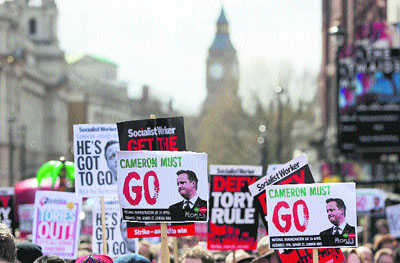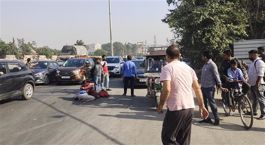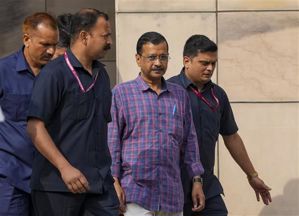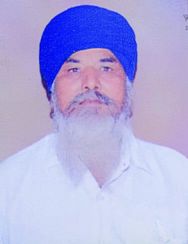
DIRTY MONEY: Several leaders around the world are in the dock.
Arun Kumar
THE leaked papers from Mossack Fonseca (MF), a firm operating from Panama, reveal how the global financial architecture helps illicit financial flows (IFF). More than 11 million files were stolen and passed on by an anonymous source to German reporters working for the newspaper Suddeutsche Zeitung, Munich, in late 2014. The files pertain to the period from 1977 to end 2015. The paper sought the cooperation of the International Consortium of Investigative Journalists (ICIJ) and data was shared with journalists from 109 global partners, including Indian Express, over eight months.
The revelations are startling. Globally, 12 current and former leaders, 128 politicians and public officials, billionaires, celebrities, sports stars, professionals and small and big businesses are named. Since Panama is only one of the 90 tax havens and MF is one of the companies operating out of there, what has been revealed points to how big the worldwide problem is? The revelations have led to an apology from the British PM and resignations by the PM of Iceland and a minister in Spain.
It is apparent that globally, the rich use tax havens and the services of companies like MF to route their funds out of their country to escape national scrutiny by the authorities. MF, with linkages across tax havens, offered its services to its clients for routing funds and opening entities. They provide readymade companies with directors and all — these are called ‘shell companies’ and used for the transfer of funds to hide the true identity of the beneficial owners.
The leaked papers show MF’s functioning and illustrates how the world of finance operates. Most Indians named did not expect data to leak out and have denied the exposes by either arguing that they have done nothing illegal or by denying knowledge of what the papers reveal about their affairs. They hope that the stratagem put into place would make it difficult for the authorities to prove wrongdoing. How this works needs to be understood.
MF claims that it acts within the bounds of legality and checks the authenticity of its clients. So, when Mr Bachchan (and others) says he does not know of the companies he was supposed to be a director in, either he is not coming clean or MF did not do due diligence or both. Leaked papers show that MF knew of the tarnished image of some of the entities but went ahead after a cursory examination to provide services to them.
So, due diligence was no hurdle for clients. The investigative reporters analysing the MF papers have found that the addresses given by some of the entities were fake. This would have been the easiest thing to check, say for a well-known person like Mr Bachchan. Passport details and proof of address was required to be submitted, so checking ought to have been easy.
Tax havens are used because they provide secrecy and/or low tax rates. When the rich route their funds via the tax havens, it leads to employment and incomes for the people and resources for the government. If a hundred billion dollars move annually through a jurisdiction, a commission of 0.1 per cent leads to a few hundred million dollars of revenue. For small island entities, this is big. For bigger entities (like London, Panama and Singapore), there are other advantages of being financial centres — catering to the businesses and other financial institutions. Trade is also routed through these entities which earns additional incomes.
Tax havens help in hiding the true identity of individuals via the use of the process of ‘layering’. Money is moved from one shell company in one tax haven to another in another tax haven and the previous company is closed. This way money is moved through five tax havens to the ultimate destination and the shell companies in the first five tax havens are closed. This makes it difficult to trace the beneficial owner, like in the Bofors case. Bofors admitted that money was paid, but who got it, remains a mystery, even though conjectures exist. Similarly, Switzerland says only Rs 14,000 crore of Indian money is in Swiss banks. If money has been layered via a shell company in Jersey, that would be counted as British money and not Indian money. So, the largest amount of deposits in Swiss banks is that of the British, not Indians or Chinese or Russians.
In the 11 million files leaked, there would be names of lakhs of entities. But only the names of those who first went to Panama may be traceable. Those who started from some other tax haven and went to Panama subsequently may not be exposed by the leaked documents. So, even though only 500 Indian entities are named in the documents, there may be thousands of other Indian entities whose true identity is hidden.
‘Layering’ makes prosecution difficult. Money may be moved only once via Panama and the company is then closed. So, even if someone claims that they opened and then closed the company soon thereafter, all the transactions that took place via that company need to be found out. It is not good enough if it is said that there was zero balance in the beginning and at the end. Suspicion about the real intention arises simply because these entities went to Panama and not to other countries.
It is not that people move their funds to tax havens because they face high tax rates. Citizens of countries with lower tax rates also used Panama. Further, tax havens have forced nations to lower their tax rates to attract capital. Tax havens, by providing mobility to capital, allows it to extract concessions from nation states and their provinces. This race to the bottom leads to a shortage of resources with the governments to carry on essential tasks, like providing public goods. Today, some OECD countries are demanding transparency from tax havens, but they are the ones that started this activity to get the resources of the developing countries via flight of capital. The secret services of some of the countries used the tax havens to route money for nefarious activities and that showed the way to others.
In brief, the financial architecture of the world, including MNC banks and businesses, is complicit in IFF. Even if a few are left, ‘layering’ will not stop and prosecution will remain difficult. So, OECD and G20 need to act in concert to tackle tax havens head-on.
The writer is a retired professor of economics, JNU



























